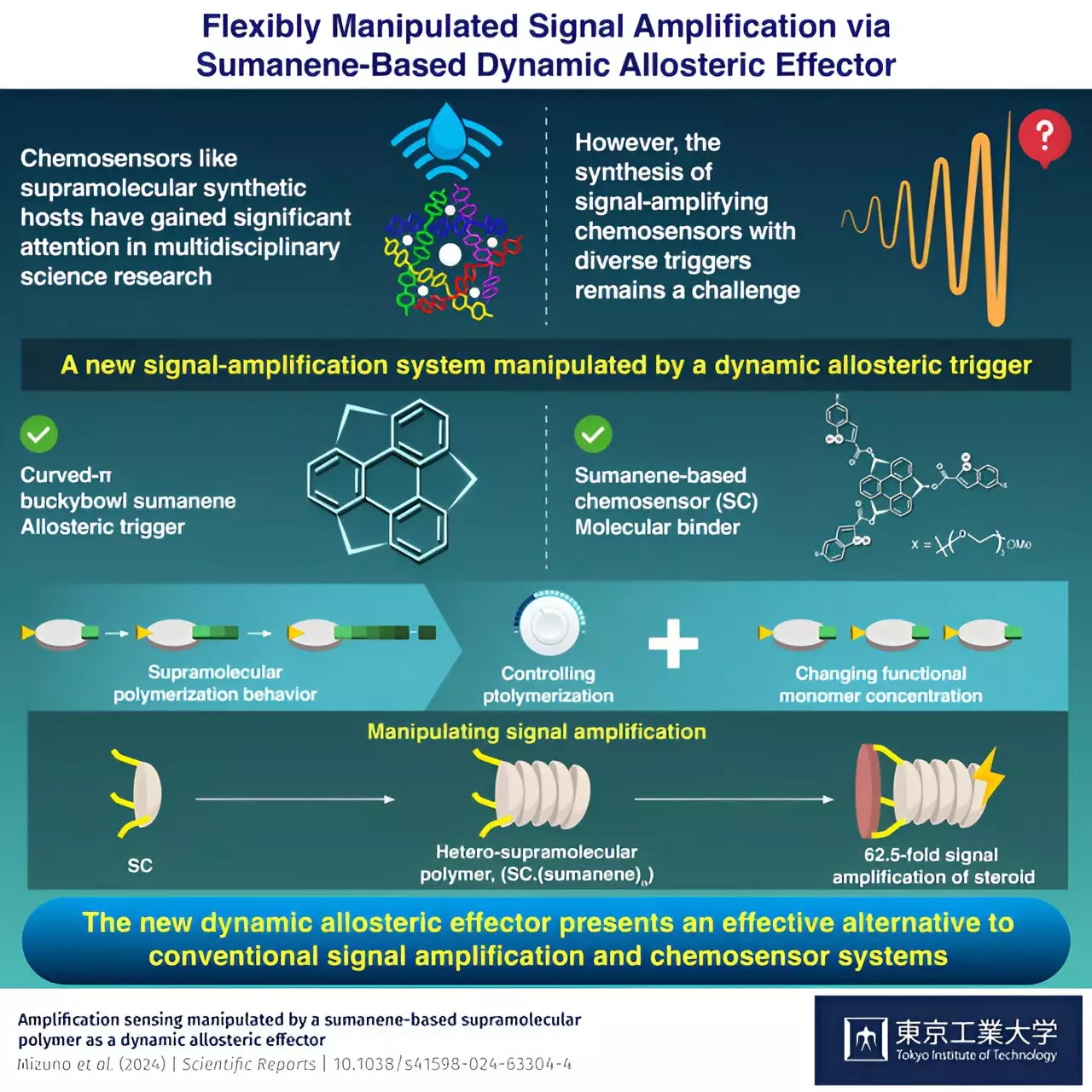Chemical sensors stand at the forefront of innovation within multidisciplinary sciences, promising to transform not only how we interpret molecular data but also how we approach problem-solving in fields such as biomedical engineering and environmental monitoring. Despite their potential, designing sensors that can effectively amplify signals in response to various triggers has historically been a daunting task. Conventional systems often adhere to the rigid lock-and-key model, which, while foundational, bears inherent limitations in sensitivity and specificity. Consequently, the pursuit of more versatile and responsive chemosensors has spurred interest from researchers across the globe, leading to groundbreaking work like that recently undertaken by a team from Tokyo Institute of Technology.
A Innovative Approach to Signal Amplification
Researchers led by Associate Professor Gaku Fukuhara have introduced a novel signal-amplification system that utilizes dynamic allosteric effectors to enhance the activity of chemical sensors. This inventive approach marks a significant departure from traditional methods, allowing for greater flexibility in manipulating sensor responses. By leveraging the unique properties of the curved π-buckybowl, sumanene, the team has successfully developed a new class of chemosensors that not only respond to targeted molecules but also exhibit remarkable signal amplification as a result of changes in monomer concentration.
What sets this system apart is its reliance on supramolecular polymerization, where functional monomers assemble through non-covalent interactions. The ability to modulate the degree of polymerization by altering the concentration of sumanene allows for real-time adjustment of the sensing capabilities. This manipulation is vital in addressing one of the key drawbacks of the lock-and-key model, ultimately leading to improved binding interactions between the sensor and the target molecules.
Understanding Allosterism in Supramolecular Systems
Allosterism, the phenomenon where a molecule binds to a site different from the active site and induces functional change, offers profound insights into how biological systems enhance their responses. By integrating this concept into the design of chemosensors, Fukuhara’s team has created a platform that not merely relies on direct binding but instead dynamically modulates sensor sensitivity. This flexibility not only enhances sensor efficacy but could also facilitate the development of devices that function reliably in complex biological environments, where many substances compete for binding.
The introduction of a sumanene-based chemosensor serves a dual purpose; it acts as a responsive element while also forming hetero-supramolecular polymers. This versatility further underscores the potential of combining supramolecular chemistry with advanced signaling techniques to create adaptable sensing technologies. The researchers demonstrated that the degree of signal amplification achieved—an astounding 62.5-fold increase in response when detecting steroids like testosterone and corticosterone—is a testament to the system’s capability to surpass conventional limitations.
Applications and Future Prospects
The implications of this research extend far beyond academic inquiry; they suggest a new paradigm for sensor technology. Given the complexity of biological materials, the ability of the Tokyo Tech chemosensor to amplify signal detection could revolutionize areas such as drug testing, environmental monitoring, and personalized medicine. By generalizing the amplification approach, these sensors may offer solutions for recognizing elusive compounds that traditional methods struggle to address.
The team’s work exemplifies not only a methodological breakthrough but a possible future direction for the field. Their findings indicate that tailored adjustments in supramolecular structures can drive future sensor development, potentially paving the way for quicker, more precise diagnostic tools.
The emergence of this new chemosensor system represents not only a triumph in scientific inquiry but also an opportunity to explore new frontiers in chemical detection and molecular interaction. The innovative strategies employed by Fukuhara’s team may very well set the stage for a new generation of highly sensitive, versatile sensors that can meet the demands of an increasingly complex scientific landscape.


Leave a Reply